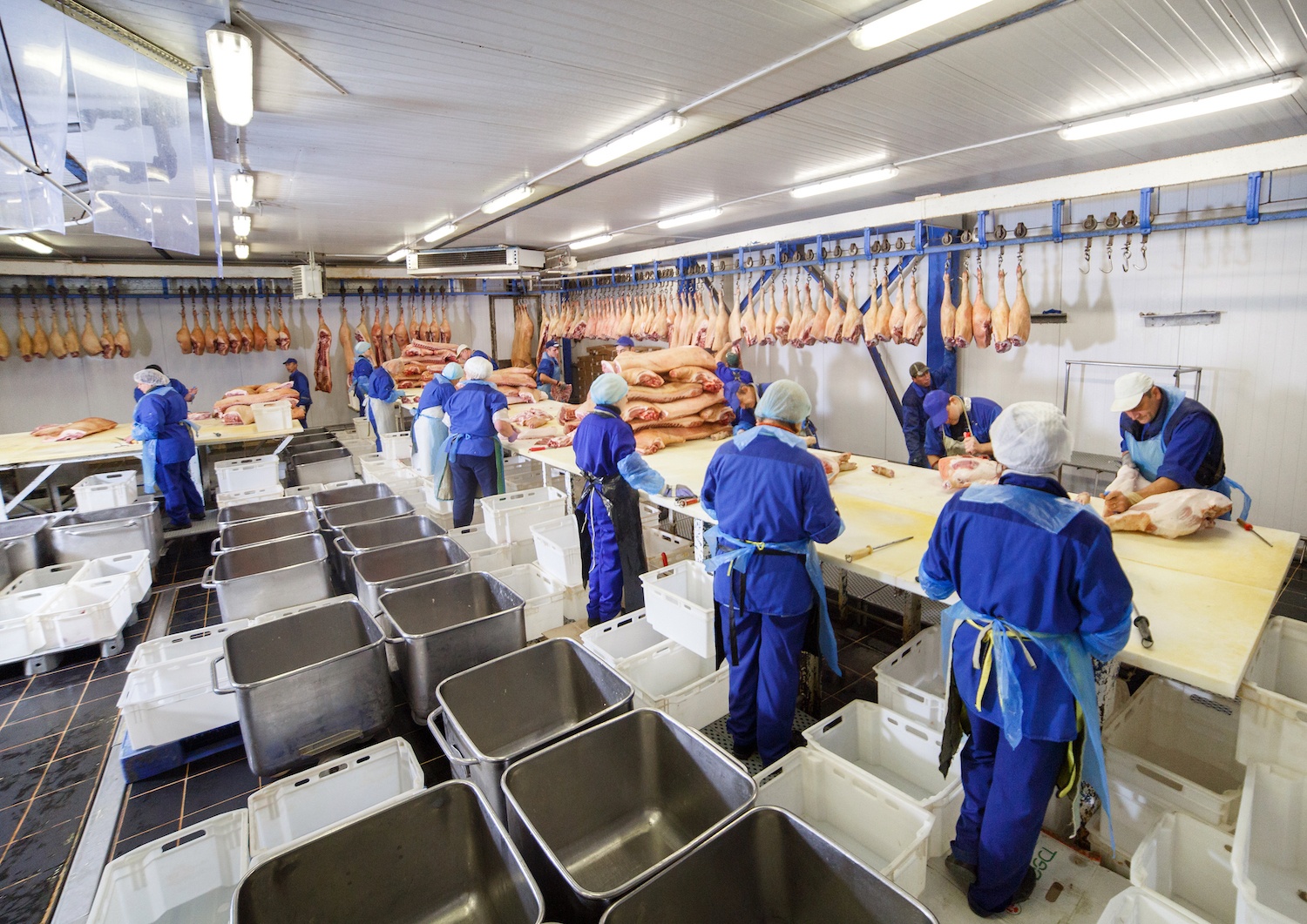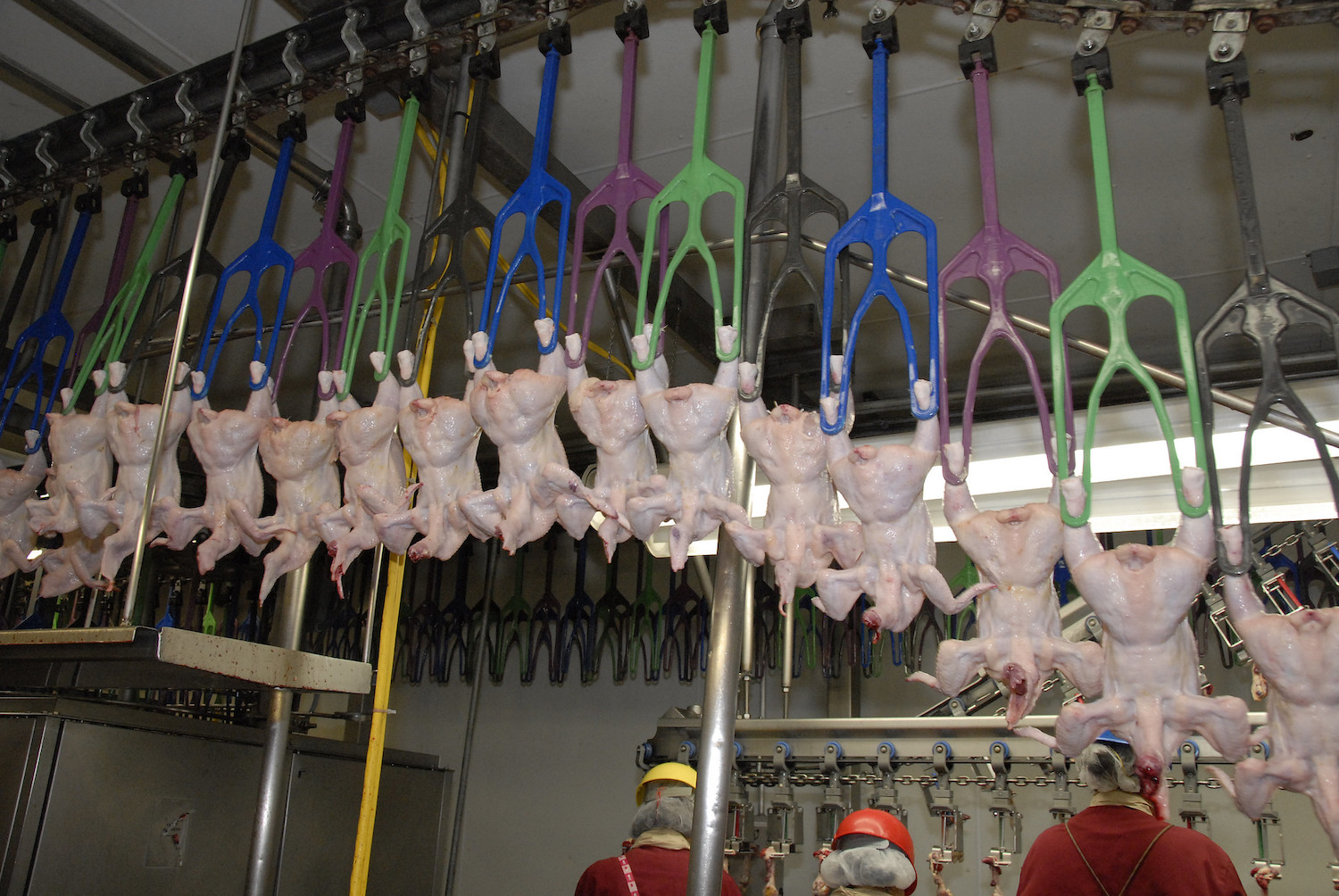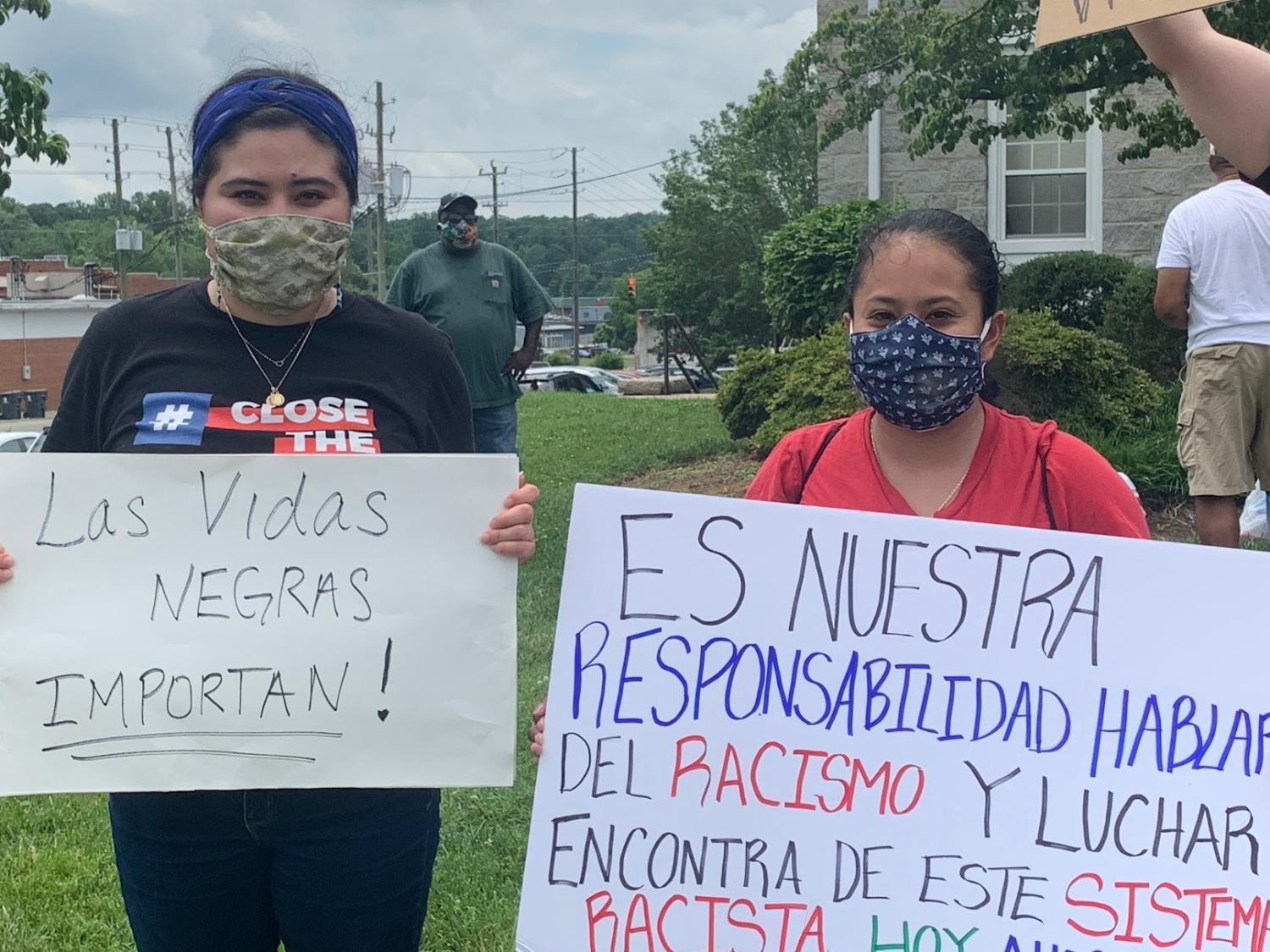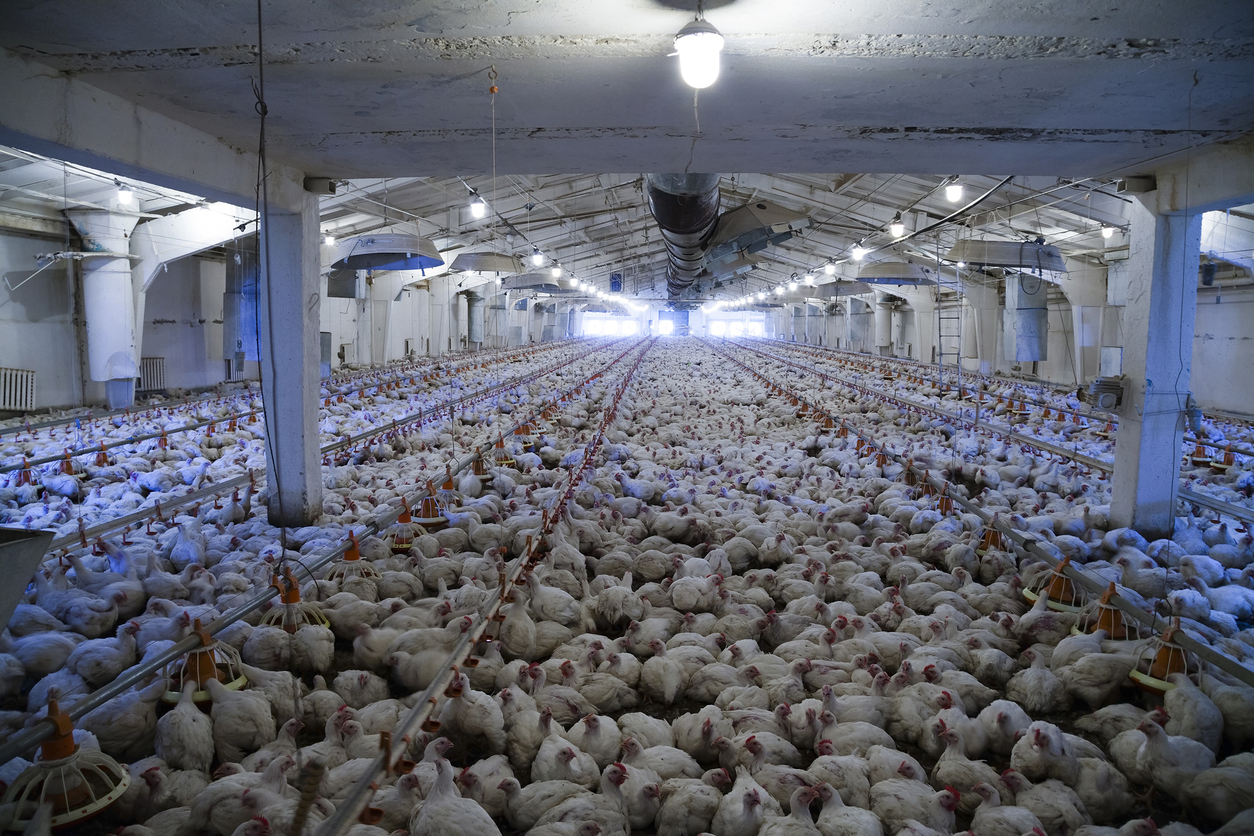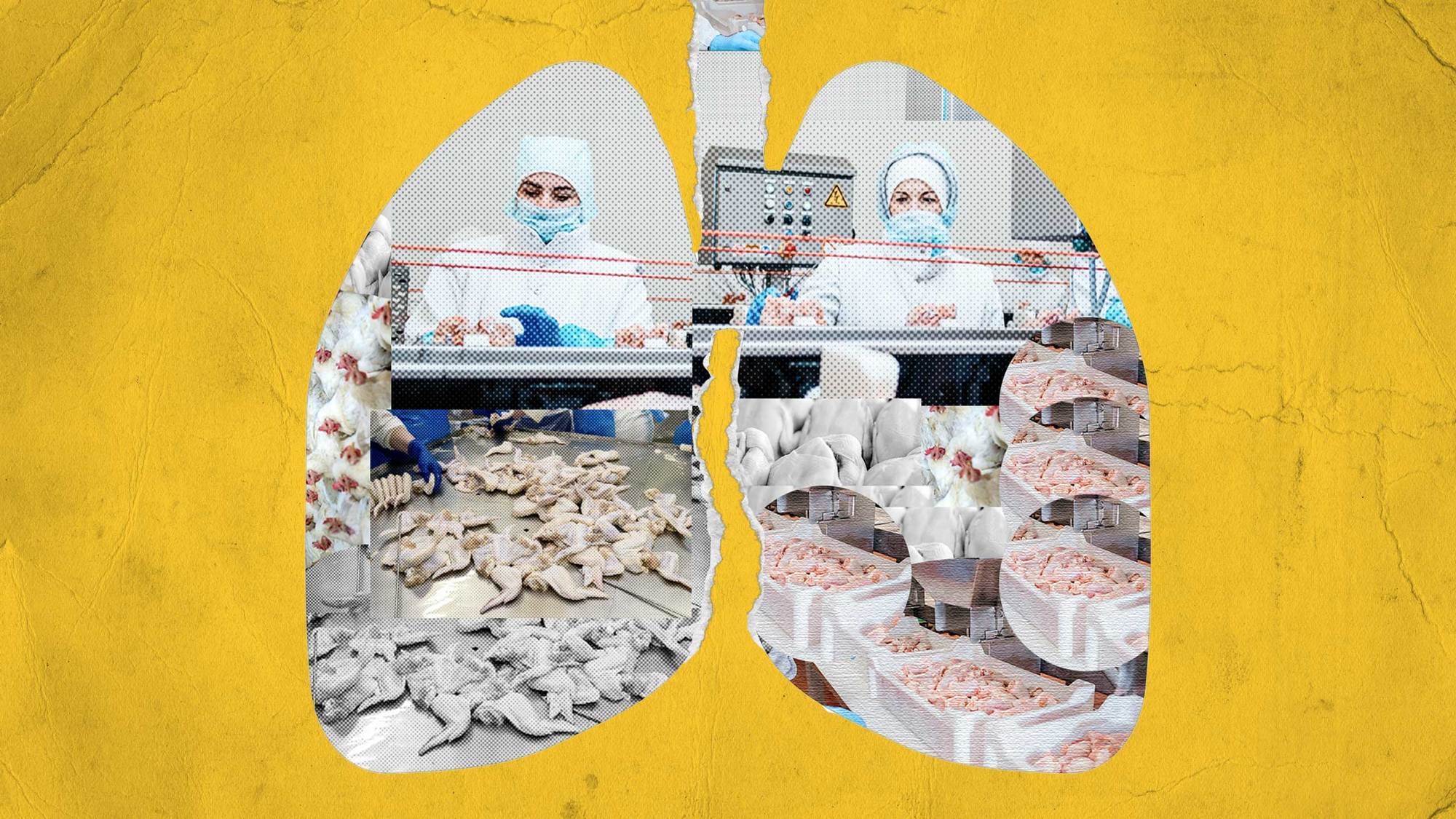
Graphic by Alex Hinton/iStock
At a facility that processes 540,000 chickens a day, workers allege that they’re being exposed to a toxic chemical that feels like it’s “invaded your brain.”
Workers at the Mountaire Farms poultry plant in rural Robeson County, North Carolina, say that about four months ago, something changed. At the time, they couldn’t immediately identify the strange new chemical they’d begun to smell floating around the production lines. But one day things were running as expected, and the next there was a sharp, suffocating kind of odor that one worker said felt like it “invaded your brain.”
“It stings your eyes and throat; it’s like a burning in your nasal cavity,” said Sharon, an immigrant who has worked at Mountaire’s Lumber Bridge plant for more than a decade and asked not to be identified by her real name because she fears retaliation from her employer. “Whatever it is, it gives us headaches and it makes us sneeze. It causes a lot of mucus and it makes it feel like your throat is cracking. It’s something in the water with the chickens because if the mist gets in your eyes, it stings like acid.”
The Occupational Safety and Health Act of 1970 requires employers to provide a workplace free from hazards that can cause death or serious physical harm to employees. While poultry plants are inherently dangerous workplaces and the repetitive motions of the job can take a serious toll on workers’ bodies, the onus is entirely on processors to properly manage the risks associated with chemical use.
“It gives us headaches. It’s something in the water with the chickens because if the mist gets in your eyes, it stings like acid.”
To chill and process poultry, slaughtering and processing facilities like Mountaire Farms store thousands of pounds of hazardous chemicals for use during the cleaning and preparation of carcasses. After a bird is slaughtered and its feathers and internal organs are removed, the carcass is washed, inspected, and chilled. In the United States, chickens are often washed with chlorine and other disinfectants during processing to reduce pathogens like salmonella and campylobacter, which frequently colonize their intestinal tracts and can cause foodborne illness in humans. Peracetic acid is also a common “processing aid” in poultry plants, used to kill or inhibit the growth of pathogens.
This “washing procedure” on the processing line involves applying chemicals via spray or wash, or as part of the water-chilling process that lowers carcass temperature. The procedure was banned by the European Union in 1997 and halted virtually all imports of U.S. poultry to EU countries thereafter, but it is still common here and U.S. regulators have specifically deemed chlorine safe for use.
But being exposed to a new chemical workers can’t identify, in doses that feel to them unusually high, “isn’t part of the job,” Sharon said. And she should know. Though she primarily works to cone the chickens before slaughter and prepare them for workers down the line, she regularly rotates to different areas of the facility. She’s helped to process nearly 2,000 birds a day for more than a decade.
Records from the North Carolina Department of Labor (NC DOL) describe Mountaire Farms’ Lumber Bridge plant as the largest facility processing large chickens in the world, slaughtering approximately 540,000 chickens per day. In 2009, a fatal ammonia gas leak at the plant—where Sharon works—killed one worker and seriously injured three others. In response, state regulators cited the company with 20 workplace violations, including one for failing to properly fit workers with cleaned, disinfected respirators. Six years later, in 2015, the company was implicated in a salmonella outbreak in two states, after one of its distributors traced the pathogen’s source to two truckloads of raw chicken parts it received from Mountaire. The distributor, AdvancePierre Foods, eventually recalled 1.7 million pounds of chicken.
Records from the North Carolina Department of Labor (NC DOL) describe Mountaire Farms’ Lumber Bridge plant as the largest facility processing large chickens in the world, slaughtering approximately 540,000 chickens per day.
Workers say they assume the chemical in use at the Lumber Bridge plant is combatting some sort of outbreak or contamination, but they can’t confirm it—and neither could The Counter. That information gap highlights a consistent problem for workers in North Carolina’s meatpacking facilities: Confirming even basic details about workplace safety issues can be an insurmountable challenge.
In early September, OxFam America ranked North Carolina worst in the nation for wage policies, worker protections, and rights to organize. But there is a growing, worker-led movement in the state and it’s attempting to push NC DOL to address workplace safety violations in a real way. On September 28, over 150 people joined the first-ever North Carolina Worker Safety Town Hall, where a labor attorney provided political education about the function of NC DOL. Workers from various industries also shared testimonies about workplace safety issues and advocated for better enforcement priorities.
“We had two people burned alive in September of last year, and two people were blown up less than 40 days ago,” said Troy Dills, a paper worker and local president of the union at the paper mill in Canton, who spoke at the town hall. (His comment referred to two separate incidents—one at a manufacturer of silicone-based products and another at a paper mill—which killed six people in total.) Dills challenged the state’s newly elected Labor Commissioner, Republican Josh Dobson, to investigate his plant’s safety issues.
Even though Mountaire workers say they are being exposed to an unidentified chemical in what they call “overwhelming doses” over long shifts, they told The Counter that the company has still not told them what the chemical is, the potential hazards it poses to their health—and, most important—how to protect themselves during exposure.
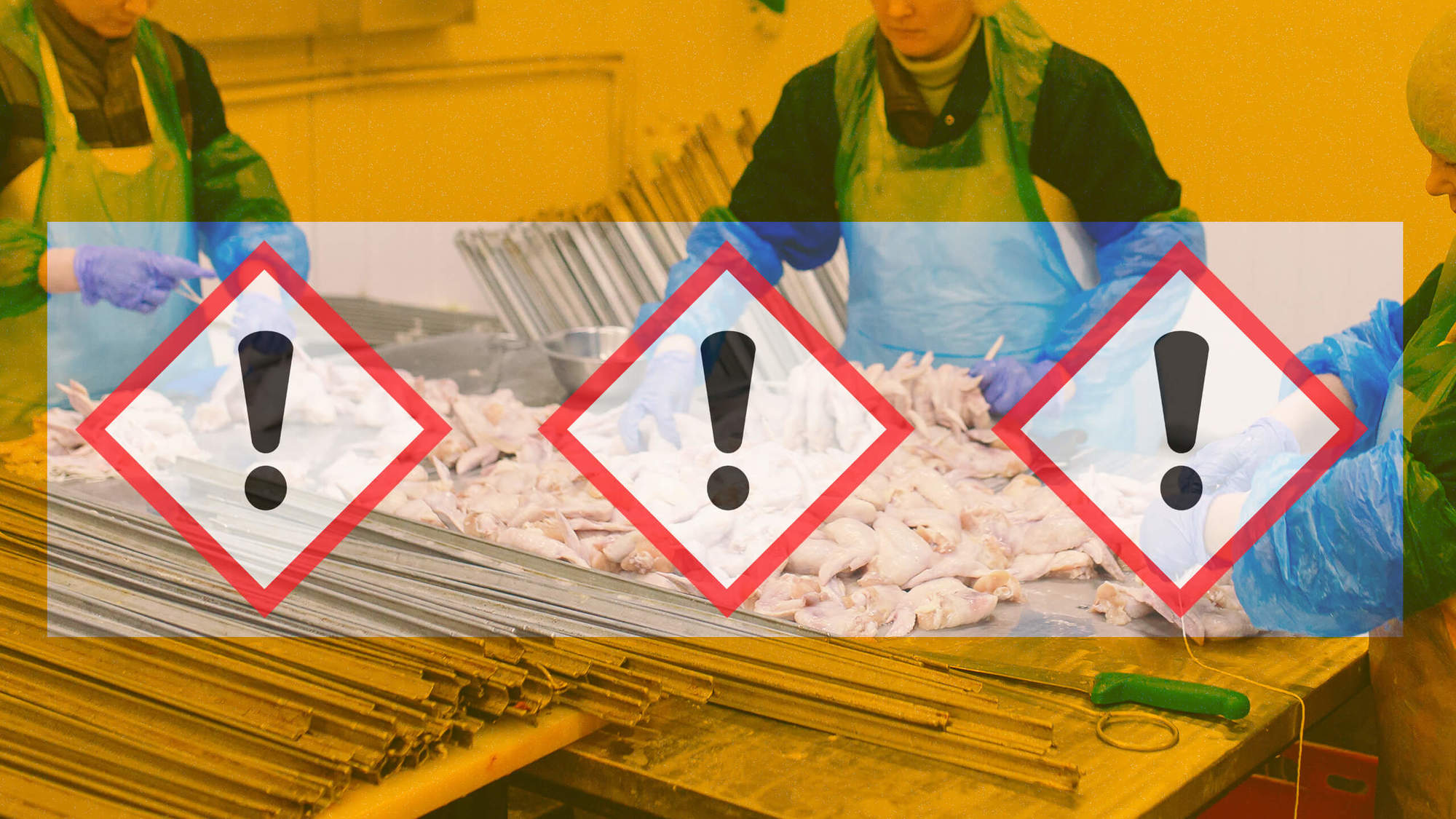
Graphic by Tricia Vuong/iStock
‘It felt like something was getting in my brain’
The Counter approached Mountaire Farms on five separate occasions with requests to identify the chemical that workers began to smell earlier this summer, as well as to confirm the plant adheres to safety protocols, among other questions. The company did not respond.
Rosa, another longtime Lumber Bridge worker who asked The Counter not to use her real name for fear of retaliation, said employees at the plant also get “total silence” from Mountaire Farms and from their direct managers and supervisors—even though multiple workers have complained about the effects of the chemical. Rosa said she can still remember the first time she came to work and noticed a difference.
“I walked on the line and my eyes watered and it felt like something was getting in my brain,” she said. “You feel it everywhere, impregnating your head. We weren’t sure where it was coming from, but from then on we had headaches and watery eyes. You feel like you want to throw up and you feel dizzy. From the time you get to the line until you leave work, you feel sick—and then sometimes you feel sick when you’re at home.”
Rosa said she suspects the chemical is ammonia. Sharon said she believes it’s chlorine. Ilana Dubester, the founder and executive director of non-profit advocacy organization El Vínculo Hispano, a resource center for the local Latino community, said she has heard it’s peracetic acid. Dubester’s organization interviewed several workers about the unknown chemical with the goal of helping them file a complaint. But if the issue is related to ammonia, chlorine, or peracetic acid—all three can be used in daily operations.
“You feel it impregnating your head; you want to throw up and you feel dizzy. From the time you get to the line until you leave work, you feel sick.”
Dr. Howard Hu, a specialist in occupational and environmental medicine at the University of Southern California’s Keck School of Medicine, is an expert on the impact of toxic chemical exposure to human health. Even without knowing which specific chemical is in use, Hu said it’s clear to him that the symptoms workers describe suggest they are being exposed to something toxic—or at least toxic at the levels they’re encountering on the line.
“It’s critical that the identity of the chemical and the levels of exposure are known. That information should be available to them. In fact, the OSHA Act includes a provision called ‘the right to know,’ which basically says the employer needs to keep the so-called material safety data sheet on file for every chemical that is used in the plant, and that information needs to be available on request,” Hu said.
There is one exception to the access requirement, in cases where the chemical in use is a trade secret. But Hu said that even in that circumstance, there’s an override provision in situations where clinicians have treated a worker experiencing adverse health effects related to exposure. That scenario, however, presumes that workers have access to healthcare in the first place. Immigrant Mountaire workers who spoke to The Counter said they do not have health insurance and they have been dealing with the effects of exposure by taking over-the-counter medications and drinking herbal teas.
Immigrant Mountaire workers said they do not have health insurance and they have been dealing with the effects of exposure by taking over-the-counter medications and drinking herbal teas.
NC DOL said that to ensure chemical safety in the workplace, information about the identities and hazards of the chemicals must be available and understandable to workers. Workplaces in the state must also adhere to federal OSHA’s Hazard Communication Standard (HCS). This criterion for classification requires—among other things—that employers who use hazardous chemicals in their processes provide labels that include a harmonized signal word like “danger” or “warning,” a pictogram and hazard statement, and that they train workers on understanding the label elements and safety data sheets.
Sharon said that no one at her facility has ever talked to her about what chemicals are in use or what their risks are—and also claims she has never been told where to access that information in Spanish.
According to NC DOL, if workers are being exposed to chemicals that make them sick, they should first make their supervisor or management aware of the problem so that the employer can “take appropriate action to correct.” If the employer refuses or does not make the needed corrections, or the employee feels that issues still remain, NC DOL said the employee can make a complaint with its Occupational Safety and Health Division (OSH) “with the alleged hazards noted.”
But before a worker can address a violation of their workplace rights, they have to first be aware of what those rights actually are. Therein lies another critical information gap: Dubester told The Counter that none of the workers El Vínculo Hispano spoke to were aware of OSH. She also said that neither Mountaire’s supervisors and managers nor the staffing agencies they contract with directed workers to OSH or even told them of its existence—though multiple workers reported the effects of their exposure to management.
“These are serious symptoms. One man at the plant had to go to the hospital after developing a lung infection.”
After Dubester’s organization informed workers of their rights and of the function of OSH as a state workplace safety and health regulatory agency, one worker decided to move forward with an official complaint. The North Carolina Justice Center, a research and advocacy organization, filed the complaint on the worker’s behalf on August 19.
Dubester said she felt compelled to step in because she was alarmed by what workers told her.
“We are talking about dozens, if not hundreds of workers being exposed to this unknown chemical and becoming ill,” Dubester said. “They are fainting at work and experiencing pain in their lungs. These are serious symptoms. One man at the plant had to go to the hospital after developing a lung infection. Anything that disturbs your lungs—especially in a poultry plant during a pandemic—should be treated very seriously, but these workers have been scoffed at for months.”
The Counter was able to confirm Dubester’s claim that an immigrant worker at Mountaire’s Lumber Bridge plant was hospitalized for a lung infection in July. A family member who confirmed the information alleged that the illness and hospitalization were both the result of exposure to the unknown chemical.
Last year, The Harvard T. H. Chan School of Public Health released the results of a study that found long-term exposure to general air pollution increased the chances of hospitalization or death in people with Covid-19. And well before the pandemic, a 2012 study found that Latino workers in North Carolina’s poultry industry experience decreased lung function due to exposure to bacteria, cleaning agents, and dust on the job. Meat and poultry processing facilities in the state continue to be places with high Covid-19 transmission rates, according to the North Carolina Department of Health and Human Services’ October 11 cluster report. That ongoing concern, coupled with long-term occupational exposure to air pollution, makes the community of poultry processing workers especially vulnerable to severe illness.
“If you add on additional risk factors for worse outcomes with Covid, like being elderly or having a pre-existing condition, then the chances of a bad outcome increase even more. This is all very concerning,” said Hu, who sits on the advisory board of the organization Physicians for Human Rights, where he has contributed to several investigations about the effects of toxic chemicals on vulnerable populations.
Workers know there is no easy solution for addressing workplace safety. But what is “very upsetting,” Rosa said, is the abject dismissal of their health concerns. Sharon and Rosa have years of processing experience under their belts both at Mountaire and at other plants in the region. They are experts in the specifics of their work—sights, smells, and sounds included.
“I’ve worked at the plant a long time. I know something is different; I know something is making us sick,” Rosa said.
‘Chemical exposure is another layer’
The responsibility to reduce workers’ exposure to toxic chemicals falls squarely on Mountaire, Hu said. In an ideal world, Mountaire would avoid toxic chemicals whenever possible, create barriers to exposure, and install ventilation that would reduce air level concentrations of whatever the chemical is. Like most processing facilities, Mountaire’s Lumber Bridge plant has no windows. Rosa said that only some areas of the line are outfitted with small vents that circulate air.
Physical symptoms are one issue, but of equal concern is the emotional impact of exposure. Dr. Maria Veronica Svetaz, an assistant professor of family medicine and community health at the University of Minnesota School of Medicine, focuses on trauma-informed care for Latinx youth and their families—including those who work in Minnesota’s numerous slaughtering and processing facilities. Svetaz told The Counter that rather than viewing stories from plants as one-offs, it’s important to look at what is happening to workers more holistically and expand our understanding of what exposure means.
“It’s not just about the exposure to chemicals; it’s about exposure to everything—exposure to Covid with no protection, exposure to illegal working conditions, exposure to a dangerous, demanding job. Chemical exposure is another layer,” Svetaz said, noting that under Dr. Alex Harsha’s lead, they are working in Minnesota to create a “primary care and behavioral health home” for plant workers so they can access a wide range of healthcare services, including support for mental health.
“Our country has a subworld where immigrants are used to lay the foundation of the economy, and then immigrants are treated like disposable, replaceable commodities.”
“We’ve created an entire economy on the shoulders of millions of immigrants and in return, immigrants in these situations are treated as disposable and that does something to your psyche,” Svetaz said.
As a physician, Svetaz said she regularly attends OSHA trainings where she and other doctors are reminded of the protocols and risks associated with using various chemicals at work.
“I’m an immigrant too, but I’m a physician and that is valued differently. So, compare the training and protection physicians get versus absolutely nothing that immigrants at plants get. In my opinion, these are human rights violations. We have created legal loopholes when it comes to immigration. Our country has a subworld where immigrants are used to lay the foundation of the economy, and then immigrants are treated like disposable, replaceable commodities.”
Records don’t tell the full story
This is certainly not the first time that NC DOL has investigated Mountaire Farms’ Lumber Bridge plant. According to 2019 records obtained by The Counter, “combo packers”—workers tasked with adding dry ice to boxes of chicken to quickly drop the temperature of the meat—were exposed to carbon dioxide at one to two times above the permissible limit. NC DOL told The Counter that employees should be informed of the location and availability of information pertaining to hazards, including safety data sheets that list all of the hazardous chemicals in use, their known health effects, and the physical hazards associated with using them. The agency said this information is required to be provided in English “but may be also provided in other languages.”
Records also show that workers interviewed during the 2019 investigation said they had no knowledge about the location of the plant’s safety data sheets, or of the hazards associated with carbon dioxide exposure.
But records paint only a partial picture. Complicating matters further, the processing industry frequently contracts with staffing agencies to employ workers. So, filing a request with state or federal OSHA to obtain records of a poultry company’s violations will not result in records for all violations. For that, you’d have to know the names of all the staffing agencies that provide mostly migrant workers to a facility, and request records for each of those agencies’ violations. Dubester is currently trying to obtain safety logs for some of the staffing agencies that contract with Mountaire Farms’ North Carolina plants.
The demographics of Mountaire Farms’ Lumber Bridge plant are hard to pin down, but workers say that a large percentage of the facility’s 3,400 employees are Latino, many of whom are migrant workers. Many of these workers are jointly employed by Mountaire Farms and a staffing agency, as noted in the Justice Center’s complaint. An investigation into Mountaire Farms’ North Carolina operations published earlier this year detailed the poultry industry’s two-tiered worker system, propped up by small, hard-to-trace staffing agencies that provide migrant workers to large corporations like Mountaire Farms. These migrant workers, unable to find other employment because of their immigration status, are forced into exploitative labor arrangements. Not only are they paid less and have no benefits, but many allege they are tasked with some of the most difficult and dangerous jobs at the plant.
The processing industry frequently contracts with staffing agencies to employ workers. So, filing a request to obtain records of a poultry company’s violations will not result in records for all violations.
Sharon, who is one of the workers jointly employed by Mountaire and a staffing agency, points out that two different layers of management means more risk—especially when neither is enforcing safety protocols. The combination of lax oversight and plain old discomfort and inconvenience can also mean that workers themselves sometimes shirk safety precautions.
“It is very hard to work with goggles and a face mask,” Sharon said. “On the line, some people work with a knife or a saw and if your goggles fog up, you can’t see what you’re doing. That’s very dangerous. Some workers don’t wear the goggles and nobody says anything, but that’s also when the chemical hurts their eyes the most.”
In an August statement to North Carolina Health News, Mountaire corporate spokeswoman Catherine Bassett told the outlet that the Lumber Bridge plant has received “no complaints from employees concerning ammonia or bleach.”
The word “employees” is doing a lot of work in Bassett’s statement. In the past, Mountaire has made it clear that “employee” is a word reserved for the company’s direct hires; not for immigrant “contractors” jointly employed through staffing agencies to work at the poultry company’s plants. In April of 2020, as Covid-19 cases were mounting in regions of North Carolina with large populations of immigrant poultry plant workers, a Mountaire Farms spokesperson said the company had offered paid sick leave to “all employees,” but explained that contractors working for other companies at Mountaire plants did not qualify for the same benefits.
“We put up with a lot, we are yelled at and humiliated and they make us shorten our breaks. Latino people do the brunt of the work at the plant.”
Contractor status doesn’t just prevent workers from taking advantage of certain protections and benefits. It can also make them less visible to management and less likely to be heard. Broadly, migrant workers at the Lumber Bridge plant told The Counter they are treated differently than Mountaire’s American citizen direct-hires.
“We put up with a lot,” Sharon said. “We are yelled at and humiliated and they make us shorten our breaks. Latino people do the brunt of the work at the plant, and we work the most intensive jobs doing knife work and operating machinery.”
Rosa said that the way she and other workers are treated—including members of her immediate and extended family—makes her feel “hopeless.”
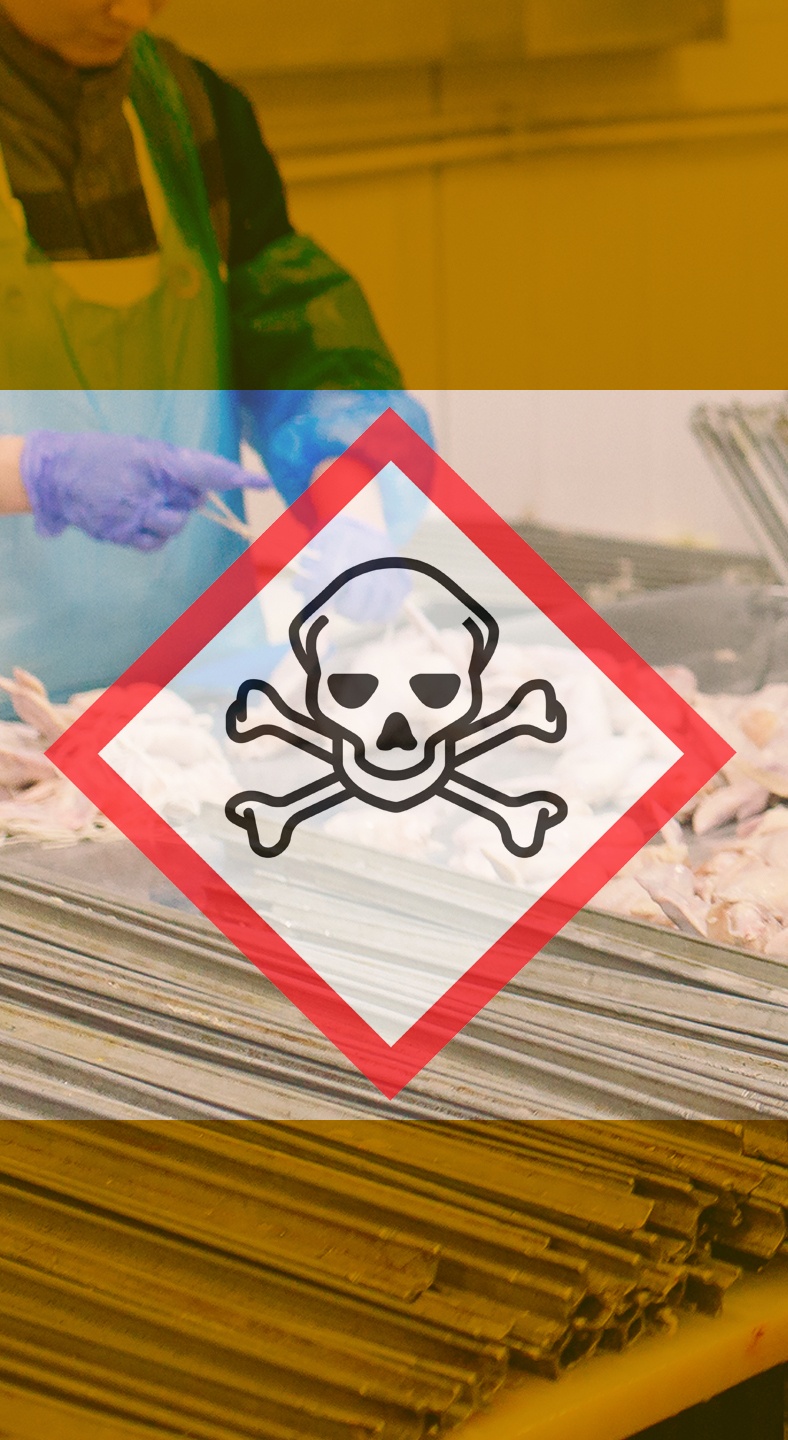
Graphic by Tricia Vuong/iStock
“We are not heard [as Latino workers]. It doesn’t matter if we speak Spanish or English or if we’re bilingual. It doesn’t matter how hard we work; we are still discriminated against. I don’t speak English, but I’ve worked at these kinds of jobs for a long time and I’ve seen so much of what goes on and even if I make a report, nobody listens,” Rosa said.
Silence is its own message
Workers say that Mountaire Farms’ silence—in response to its employees, media, and advocates in the state—only worsens their fears and leads to misinformation.
When the coronavirus first began to multiply, migrant workers who were monolingual Spanish speakers said they didn’t have access to basic information at Mountaire’s two North Carolina plants. Many learned of Covid-19 outbreaks at their facilities from Spanish-language media. When their colleagues disappeared in large numbers from the poultry lines, workers said their supervisors failed to inform them whether it was because of infections, resignations, or deaths. OSHA requires employers to document all work-related injuries and illnesses in recordkeeping forms, referred to by the agency as “Form 300.” Employees who ask to see the Form 300 must be granted access, but many workers aren’t aware of this workplace right.
History is repeating itself at the Lumber Bridge plant. According to workers who spoke to The Counter for this story, the facility is again short on staff. Some workers believe that’s due to recent resignations over the unidentified chemical. Others fear there’s a more serious reason.
“Some workers have reported recent deaths at the plant that they attribute to chemicals, though I have not been able to substantiate those reports at this time,” wrote Justice Center attorney Carol Brooke in the complaint filed with NC DOL. (A spokesperson for NC DOL told The Counter the Lumber Bridge plant reported a worker fatality on April 30, 2021, but “based on information received from the employer, it appears this fatality was related to a pre-existing medical condition.” NC DOL did not open an investigation.)
When their colleagues disappeared in large numbers from the poultry lines, workers said their supervisors failed to inform them whether it was because of infections, resignations, or deaths.
What’s clear is that nobody really knows how sick the chemical has made some workers. They see empty spaces on the production line and their minds begin to spiral. What are workers supposed to think?
Sharon said she was present at the plant recently when someone she assumed to be an inspector came to monitor the lines. She alleges that when the inspector was present, the chemical wasn’t detectable. But she said the day after the inspector left the plant, the chemical fumes returned.
“We are worried that this chemical is killing us very slowly,” said Sharon, growing emotional. “Some days I go to work hungry and tired because I don’t want to be late. I give my best to Mountaire, but the headaches I’m having are unbearable and it’s clear [Mountaire] doesn’t care about us. They only care about production. We can be dying and they won’t give us sick time; they won’t help with our hospitalization. They don’t treat us like humans. I know a lot of workers afraid of this chemical; afraid it will give them cancer or some kind of brain hemorrhage. They quit because to them it’s not worth the risk.”
On October 4, Mountaire workers told the Counter that those on second shift—which begins around 5:30 p.m.—still experience symptoms related to the chemical, depending on the line they’re working. A spokesperson for NC DOL said that a compliance officer opened an inspection at the Lumber Bridge plant on August 24, but the agency could not confirm any other details of the ongoing investigation—including the identity of the chemical being used at the facility.
Clarification: The initial headline for this story stated that workers were quitting in large numbers, an accusation in the worker complaint that could not be wholly verified.

